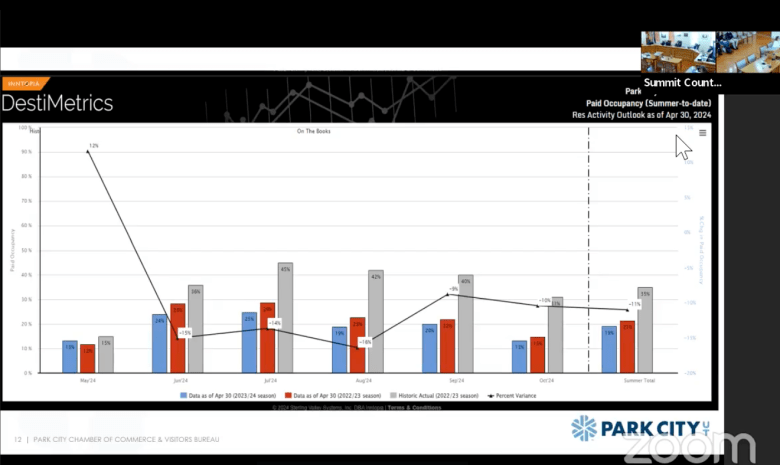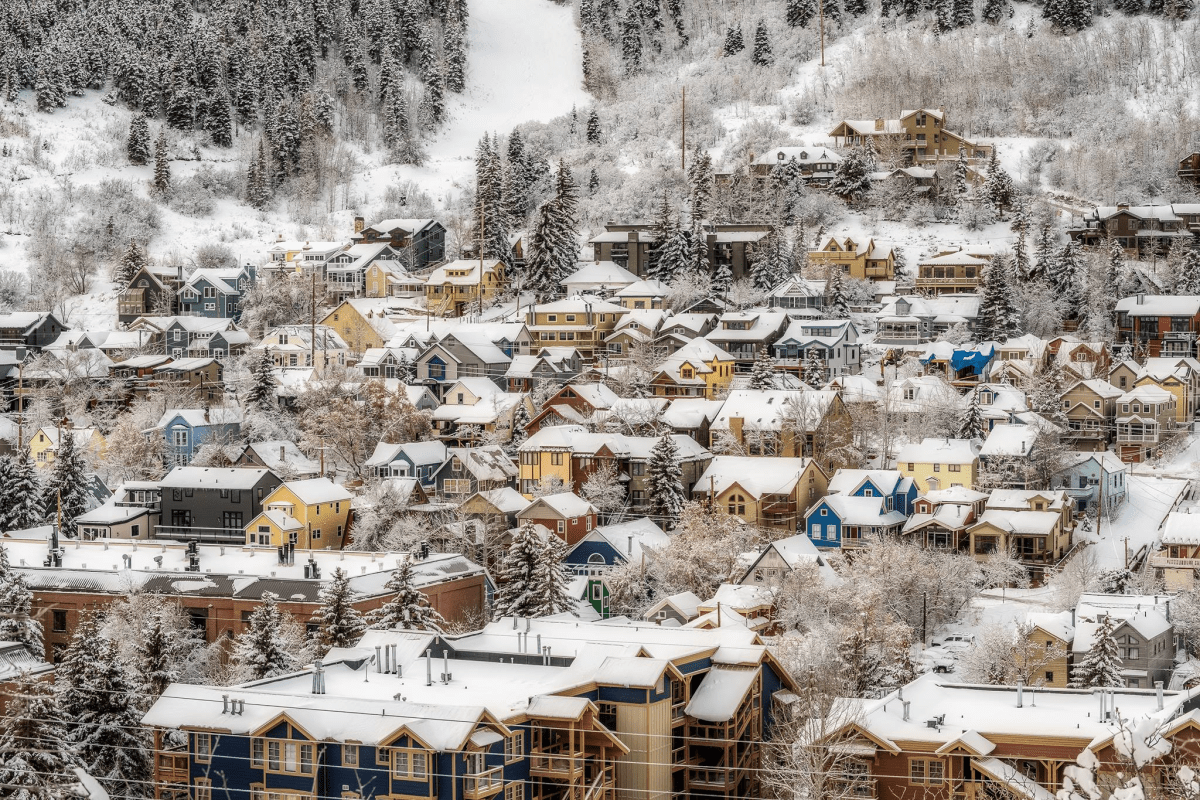Lodging numbers in the Park City area maintained stability this winter following last year’s record-breaking season, but local tourism industry leaders expect summer occupancy to decline.
Looking ahead to the next six months, Park City Chamber/Bureau President and CEO Jennifer Wesselhoff said Summit County is drastically underperforming compared to other mountain towns, including Aspen, Vail, North Lake Tahoe, Jackson, Breckenridge and Sun Valley.
As of April 30, reservations in the Park City area are 11% behind last year’s pace. June is projected to be behind pace by about 15%, July by 14% and August by 16%. Wesselhoff said the projected decline would affect the entire season moving forward.
“Right now, summer is looking really slow,” she told the Summit County Council on Wednesday.
Wesselhoff said many ski towns are probably feeling this way. October is the only month when the Park City area is trending ahead of similar communities.
She attributed the decline to competition from other destinations, particularly abroad.
Recent reports estimate about 39% of Americans are planning more international travel, Wesselhoff said, making it harder to convince people to stay within the United States.
Consumer confidence is also wavering, and uncertainty surrounds interest rates and inflation. There’s also an upcoming presidential election. The Chamber/Bureau is keeping all of this in mind as it plans ahead.
“We have some favorable components … but also some unfavorable and mixed components we’re keeping track of,” Wesselhoff said.
Visitorship is expected to grow when the weather turns cold, particularly during December and the holiday season. Tourism experts also anticipate an increase if Utah is awarded the 2034 Winter Olympics. The meeting market has started to come back strong, too, and so has the market for international visitors.

Lodging numbers were up about 3% during the six-month winter season. Wesselhoff was glad to see the Park City area maintain its volume of visitation. She was also proud to see such strong numbers following the record-breaking 2022-23 season.
However, occupancy numbers during that period only outperformed those of other ski towns during February, the snowiest February on record at Park City Mountain resort.
“We still have a lot of room to grow and to perform in the winter market,” said Wesselhoff.
Tourism-related tax collections — local sales tax, option sales tax, transient room tax, restaurant tax, Recreation, Arts and Parks and the mass transit sales tax — finished up last year, and those same categories are now elevated between 6% and 9%. Wesselhoff said this is good news because it shows tourists are spending money while visiting the community.
Transient room tax collections also reflect moderate growth in occupancy and a flat, more level growth in average daily rates. They’re up about 6% at the moment, but Wesselhoff expects them to level out closer to in-month bookings.
The number of skier days for the 2023-24 season is expected to be lower than last year, but it will likely be higher than the 2021-22 season.
Wesselhoff said the Chamber/Bureau is focused on attracting a different demographic to the Park City area compared to other mountain towns. There’s a conscious effort to implement the ideas of the sustainability tourism plan, including promoting Summit County as a car-free destination and enhancing storytelling around the community’s history.
She also highlighted summer programming that is underway and the recent rebranding effort. The Chamber/Bureau is also hoping to launch a mobile Visitor Center next year to meet visitors where they’re at and help influence and educate them.

